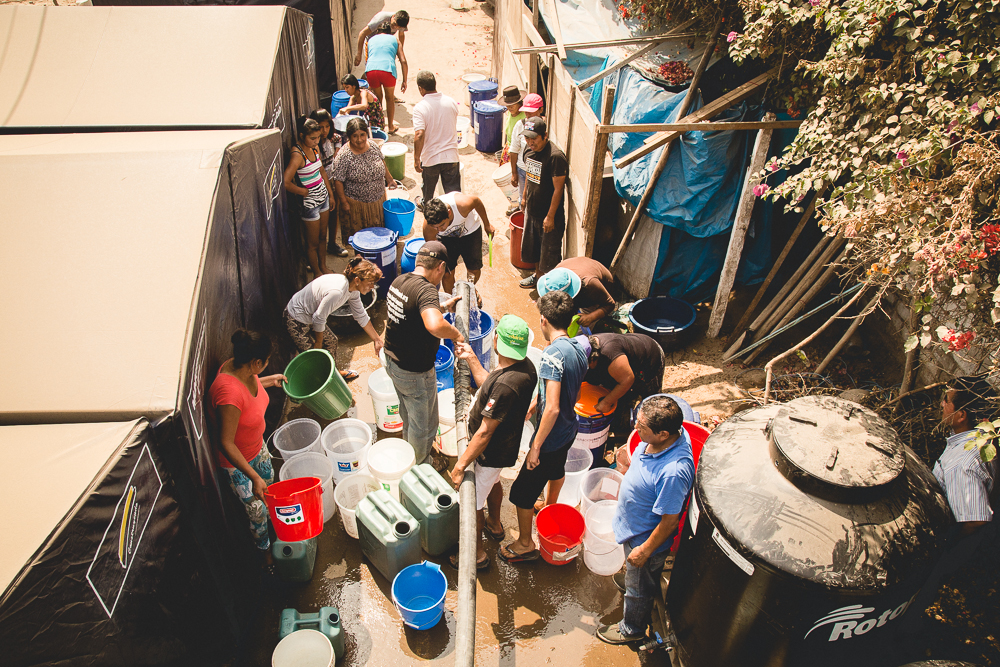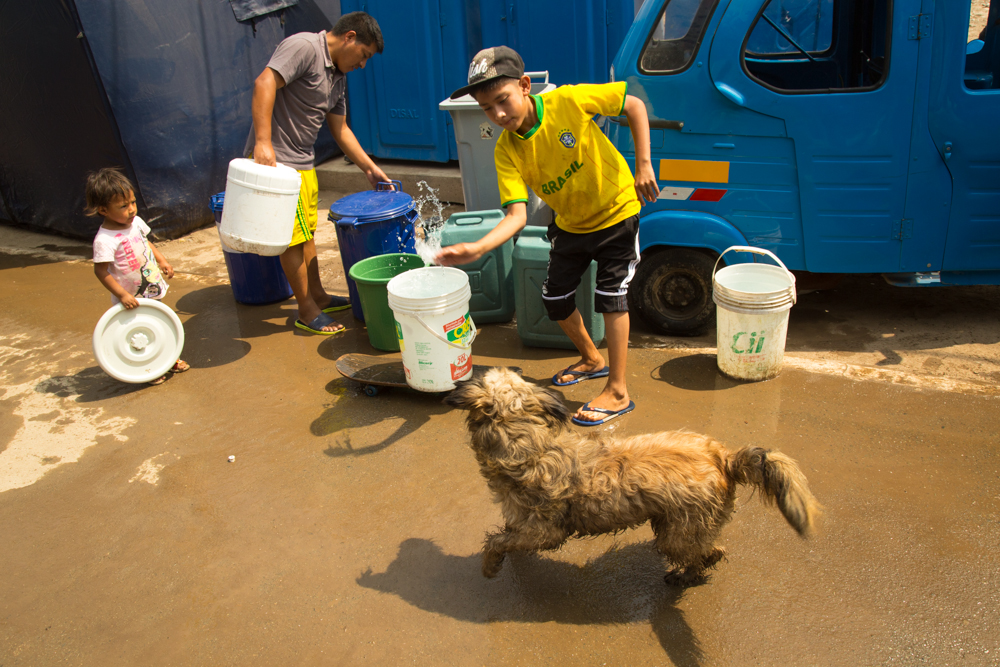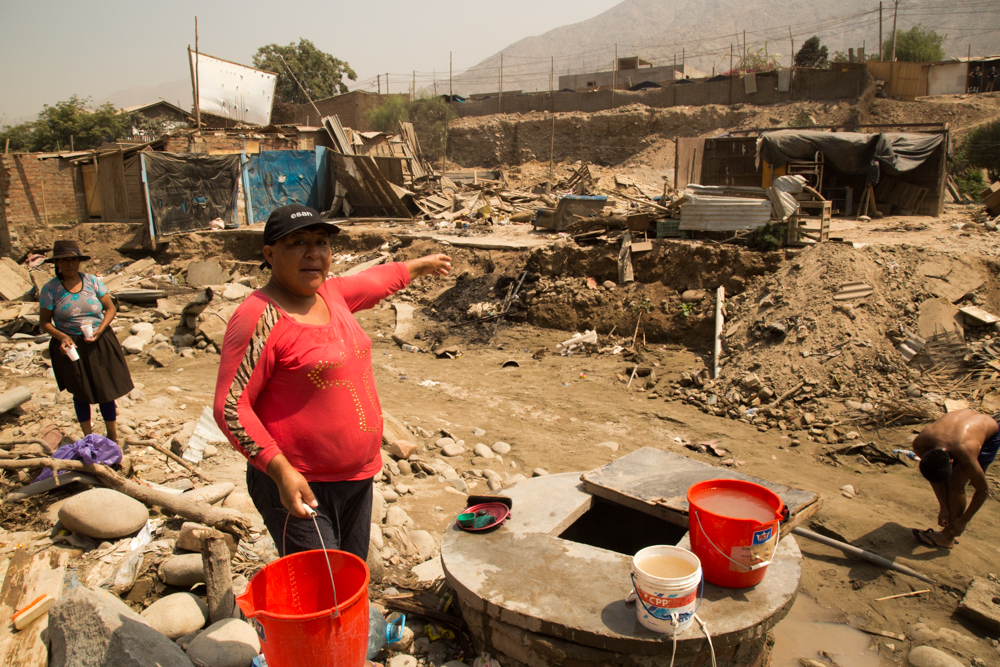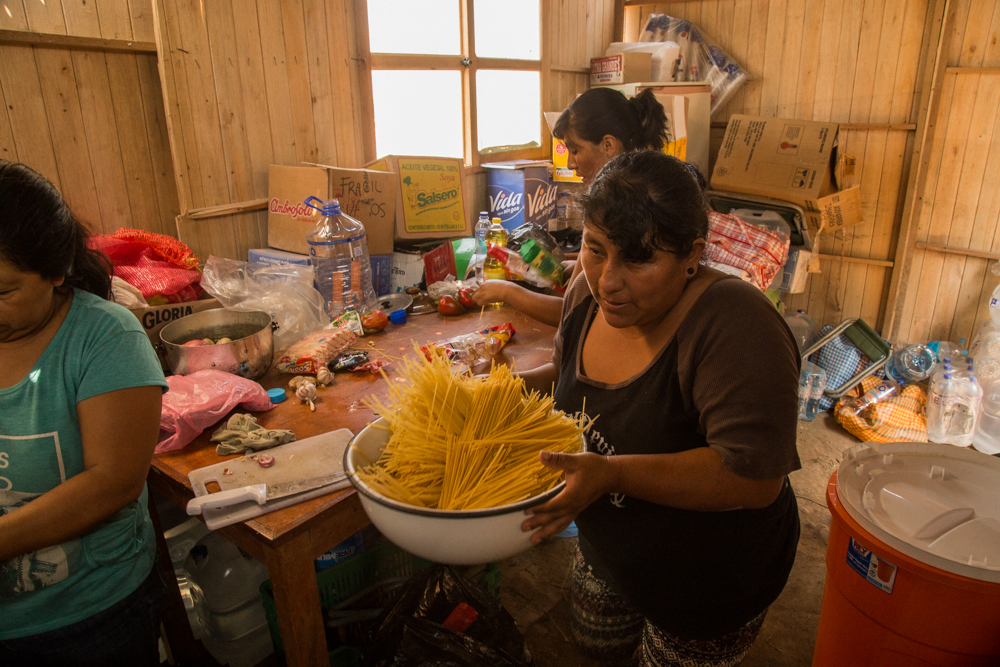Tents provided by the municipal government line the streets, inside them varying levels of food, water and possessions. Some families have a car parked outside the tent, others have functioning kitchens with ovens and stoves powered by gas. Still many have little more than the clothes and belongings they managed to salvage from the flood.
Since after the huaicos that destroyed parts of the 27 de Junio community in Lima last month, there is no clear plan of recovery in place for those displaced from their homes. Those in the Encampments are in an inbetween state, living with the wake of the disaster.


When MEDLIFE arrived with a water truck, the residents flock to fill up any buckets and barrels they have. With no access to the water system of Lima the trucks filling up plastic tanks and barrels is the only way to get a large amount of potable water. Even then, the water trucks cost money and inconsistently visit the community.
The Simeon Emiliano Ramirez Mendoza, who now lives in tent in 27 de Junio, says there has been little aid from the government and he expects little in the future.
Below the tents in the washed out river bed, the debris of homes swept away from the huaycos remains. Tempora Ventura Donato use to live close to the Huaycoloro River before her house was swept away during the huaicos. She now lives in a tent with her son, daughter in law and sisters up the hill from her old home.

She stands where her home once stood with her family while some of them wash up with buckets in their bathing suits to bathe. Donato says her home was swept away in the middle of the night and they have lived in the tents since then. They are still able to use a well to get water for bathing, but the water is not potable.
In the camp, a comedor, a public kitchen serving discounted meals, operates off of food from the government as well as donations. Stocked with cans of tuna, dry pasta, chicken and potatoes, women living in the encampment prepare a large pot of atun con tallarine, tuna with noodles.

The comedor functions like much of 27 de Junio now, where life attempts to carry on as usual through the inconsistent government aid and donations provided. After the Huaicos, many people are living as refugees in their own community.
MEDLIFE has been carrying out a special project to bring medical assistance, donations and water trucks to communities affected by the huaycos. You can DONATE to our efforts to aid the victims of the disaster.
